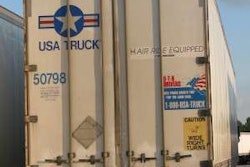Sindall Transport earned the highest honor in its class of competition in the annual American Trucking Associations’ 2009 Truck Safety Contest.
For achieving a vehicle accident ratio of zero, the motor carrier took First Place in the General Commodities Truckload/Line-Haul/Between 0-10 Million Miles category. The New Holland, Pa.-based company also earned First Place in the Flatbed/Line-Haul/Between 0-10 Million Miles and Second Place in the General Commodities Truckload/Local/Between 0-20 Million Miles category and Flatbed/Local/Unlimited Mileage category – also both with a vehicle accident ratio of zero.
Sindall Transport was honored at both the ATA Safety Management Council’s National Conference and Exhibition in Pittsburgh in September, and recognized again at the ATA Management Conference & Exhibition, in Las Vegas, Nev., in October 2009. ATA Truck & Industrial Safety Contests judge carriers from all 50 states in 32 different classes of competition based on their vehicle accident rates or lost workday case rates.
Hauling across the United States and Canada, Sindall Transport is one division of the Sindall Companies that include Truck Services and Warehousing. For the last six years, Sindall Transport consistently has captured top honors in at least two of the Truck Safety Contest categories, and in 2005, 2006 and 2008, they earned first place in three categories.
“With tighter budgets and financial concerns weighing on everyone’s mind, remaining fully focused on safety and excellence is certainly challenging, but achieving a vehicle accident ratio of zero under these circumstances in multiple sectors of your operation is an accomplishment worthy of respect and acclaim,” says Susan Chandler, executive director of the ATA Safety Management Council. “Nothing says ‘overwhelming commitment to safety’ like zero ratio. We applaud Sindall Transport and thank the truckload carrier for continuing to make highway safety priority number one.”










